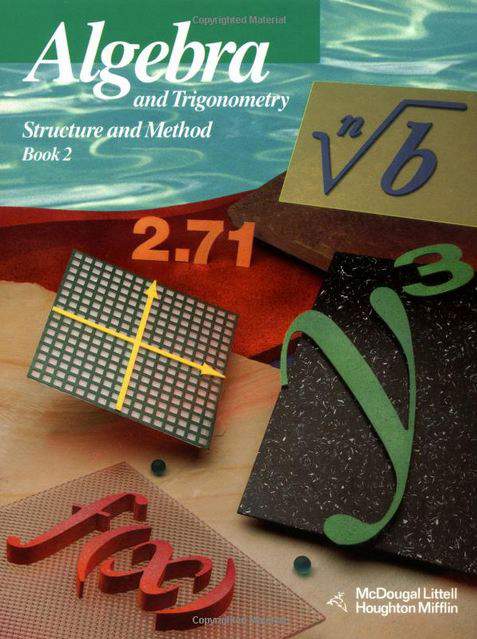Connecting...

For more information, please see full course syllabus of Algebra 2
Algebra 2 Properties of Real Numbers
In this lecture, you'll learn about the subsets of the real numbers, like the natural numbers and fractions. There are a few essential properties you need to know about Real Numbers. Firstly, a real number corresponds to a point on the number line. Since there are infinitely many points on a line, there are also infinitely many real numbers. Secondly, real numbers are either rational or irrational; rational numbers can be expressed as a fraction while irrational cannot. For example, pi is an irrational number. Thirdly, the relationship between the various types of real numbers can be expressed using Venn diagram. Lastly, real numbers are commutative and associative under addition, and multiplication have additive and multiplicative identities and inverses, and satisfy the distributive property.
Share this knowledge with your friends!
Copy & Paste this embed code into your website’s HTML
Please ensure that your website editor is in text mode when you paste the code.(In Wordpress, the mode button is on the top right corner.)
- - Allow users to view the embedded video in full-size.









































 Carleen Eaton
Carleen Eaton Grant Fraser
Grant Fraser
 Answer Engine
Answer Engine



1 answer
Sun Aug 12, 2018 5:25 PM
Post by Jerry Xu on July 29, 2018
what is -6 over 7 8hs
don't you mean -6 and 7 8ths
2 answers
Last reply by: Gull Aqa Nazari
Tue Jun 9, 2020 7:19 PM
Post by Jamal Alabbood on November 14, 2014
-6*7/8 in this example you write -55/8
but it is -42/8
1 answer
Thu Jul 31, 2014 7:09 PM
Post by Darin Weaver on July 17, 2014
Wouldn't either 1/4 or 1/2 come before 1 on the number line instead of after?
Just an observation.
0 answers
Post by abdulaziz bagabas on December 8, 2013
i started to be very confused in the last 4 examples of this lectures.
0 answers
Post by Victor Castillo on January 24, 2013
slow down!!!!
3 answers
Thu Jul 31, 2014 7:06 PM
Post by Su Jung Leem on August 6, 2012
Since when were the irrational numbers represented by the Q with a line over it and rational numbers represented by Q? n also if this is true, why use the specific letter Q?
1 answer
Wed Sep 5, 2012 7:54 PM
Post by Dan Traynor on August 5, 2012
How are Irrational numbers represented by the letter Q with a line over it? Please Expand...
1 answer
Tue Jul 10, 2012 10:48 PM
Post by Sayaka Carpenter on July 3, 2012
I didn't know how to add on to sam's question, but his question is at 13:56. I have the same question.
4 answers
Last reply by: Jeffrey Tao
Sat Nov 2, 2013 10:49 PM
Post by sam lawndy on June 6, 2012
2(4+(3+7))=2((3+7)+4) Isn't A ssociative Property
1 answer
Wed Dec 28, 2011 8:59 PM
Post by Jonathan Taylor on December 26, 2011
DR CARLEEN U WROTE 1/4 IN STEAD 1/2